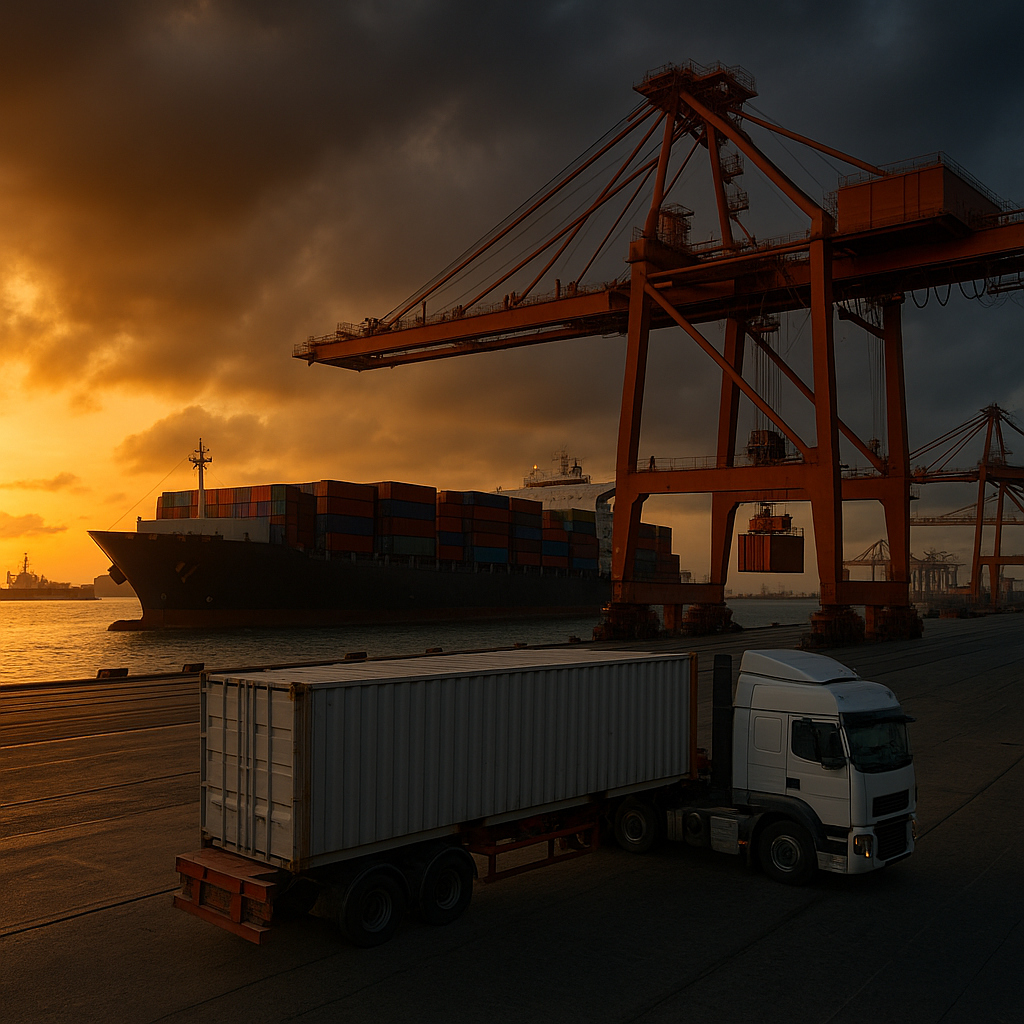Geopolitical and maritime chokepoints threaten global supply chains
Global supply chains, once optimized for efficiency, are now increasingly exposed to compounding risks. The study highlights how disruptions, ranging from pandemics and political conflict to environmental shocks—are no longer isolated events but part of an interlinked risk ecosystem. The Suez Canal blockage, COVID-19-induced shortages, and the Ukraine-Russia war are cited as recent examples that exposed the fragility of international logistics systems.

A new study has found that geopolitical instability and vulnerabilities in maritime transport routes present significant, often overlooked, risks to global value chains, with serious implications for the energy transition. The study, “Challenges for Energy Transition: Incorporating Maritime and Geopolitical Risks,” was published in The World Economy and investigates how trade-related risks affect critical supply chains, particularly in the automotive sector of Germany, Japan, and the United States.
The research introduces an expanded Multi-Regional Input–Output (MRIO) framework that quantifies both country-specific and maritime transportation risks. Using a combination of economic input–output data and geopolitical risk indicators, the study reveals that even supply chains with diversified imports are susceptible to systemic shocks if they depend on high-risk trade routes or politically unstable regions.
What new risks threaten global supply chains?
Global supply chains, once optimized for efficiency, are now increasingly exposed to compounding risks. The study highlights how disruptions, ranging from pandemics and political conflict to environmental shocks—are no longer isolated events but part of an interlinked risk ecosystem. The Suez Canal blockage, COVID-19-induced shortages, and the Ukraine-Russia war are cited as recent examples that exposed the fragility of international logistics systems.
Rather than focusing solely on access to oil or rare resources, the researchers broaden the scope to include intermediate goods vital for domestic production. These components, often traded across multiple borders, are vulnerable at several stages: at their point of origin, along their maritime transport route, and at final delivery destinations.
To assess these threats, the authors developed a methodology that integrates country-level risk data (based on natural hazard exposure, institutional weaknesses, and socio-economic vulnerabilities) with transport route vulnerabilities, especially chokepoints like the Bab el Mandeb Strait, Panama Canal, and South China Sea.
Their findings challenge conventional wisdom that a higher import share automatically means greater risk. Instead, risk is found to be more deeply influenced by where and how goods are sourced and transported, rather than simply how much is imported.
Which countries are most exposed and why?
The study compares the motor vehicle industries of Germany, Japan, and the United States, sectors chosen due to their high economic impact and role in the green transition. Germany, despite having the highest import share of intermediates (47%), does not necessarily face the greatest risk. Its vulnerability is more directly linked to the routes and origins of its imports. For example, Germany's heavy reliance on goods transiting the Bab el Mandeb Strait means this single chokepoint contributes nearly half (49%) of the country’s maritime transport risk.
Japan, which imports 28% of its intermediates, shows concentrated dependency on Chinese inputs. Its export routes to the United States are low-risk, but the reliance on long-haul imports exposes its supply chain to elevated geopolitical and maritime vulnerabilities. The U.S., with a 37% import share, benefits from its proximity to lower-risk partners like Mexico and Canada, giving it the lowest maritime and export-related risk profiles among the three.
Interestingly, the study found that the U.S. still shows higher site-specific risks despite a lower import share compared to Germany and Japan. This underscores the conclusion that reducing imports alone is not a reliable strategy for mitigating exposure. Instead, countries must evaluate the risk profile of specific supply routes and the geopolitical stability of trading partners.
Can risks be mitigated without undermining trade efficiency?
The research also evaluates potential responses to these risks and their consequences. One key takeaway is that shifting to alternative, safer transport routes often comes at a cost, both economic and environmental. For instance, avoiding the Bab el Mandeb Strait by rerouting via the Cape of Good Hope could add 10 days to shipping times, increase transport costs by up to $1.90 per ton, and generate an additional 140 tons of CO₂ emissions per day. These trade-offs make clear that any shift toward risk-averse strategies must balance financial feasibility and sustainability goals.
Moreover, the study notes that while maritime transport risk can be reduced through logistical adjustments, the costs may ripple across industries that depend on just-in-time delivery models. As such, businesses and governments face difficult choices: invest in more resilient and diversified supply chains or absorb the potential economic shocks from future disruptions.
The study’s robustness was further confirmed through sensitivity analysis. Even when factoring in changes to input–output structures, chokepoint risk ratings, or geopolitical classifications, the overall rankings of risk exposure remained stable. This consistency reinforces the conclusion that traditional value chain models are inadequate without factoring in layered, cross-border risk dimensions.
Implications for energy transition and policy planning
The findings carry major implications for the global energy transition, which depends heavily on reliable access to critical materials and technology-intensive inputs. As governments and corporations invest in electrification, clean energy systems, and climate-resilient infrastructure, understanding where supply vulnerabilities lie becomes critical.
The expanded MRIO model used in this study offers a blueprint for integrating geopolitical and logistical fragilities into long-term planning frameworks. This is especially relevant in sectors such as electric vehicles, solar panels, and battery storage systems, industries where value chains often span dozens of countries and traverse multiple maritime chokepoints.
Policymakers are encouraged to move beyond import-reduction rhetoric and instead adopt nuanced, risk-aware trade strategies. These might include investing in regional diversification, enhancing port security, and integrating transport resilience into national climate policies.
- FIRST PUBLISHED IN:
- Devdiscourse










